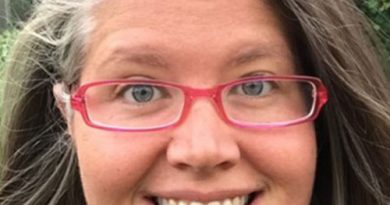Students in the Room and Students on Zoom: Tufts Faculty Experience Dual Modality Instruction
by Dana Grossman Leeman, Sr Associate Director, CELT
Many of you are pleased to be back in the classroom with your students and your students are happy to be with each other and to have a semblance of the familiar. Still, creating a cohesive and connected experience for students who are sitting in the face-to-face classroom as well those taking the class remotely or asynchronously can be challenging. Bridging the distance that dual modality teaching can create between faculty and some of their students, as well between students takes hard work and planning.
What are some of the common challenges that faculty are having difficulty with?
- creating connection and doing group work between in-person and remote student: F2F students can’t talk to each other and students on zoom feel forgotten.
- engendering spontaneous conversation in discussion based courses
- making labs work with limited space
- keeping students engaged during synchronous sessions
Arts and Sciences Faculty Successes in the Dual Modality / Hybrid Classroom
We invited a few faculty from Arts & Sciences who are teaching in very different disciplines with varying size classes and contextual challenges to respond to the question: “What’s working well for you in your hybrid classroom?” Each of these faculty have developed innovative approaches to foster a connected learning environment.
Sam Thomas, Chemistry 2 Lab
Sam Thomas, Dean of Arts and Sciences and Professor of Chemistry is teaching Chemistry 2 laboratory, a course with 140 students, which has a lecture component led by Ira Caspari. He shares how he is engaging students in lab work in what he hopes is an equitable and effective way for learning for all of the students in the course.
Sam Thomas created lab groups constructed to foster community, interdependence, and independent work. Because students cannot attend labs together, a representative from each group attends lab on a designated day and does the experiment on behalf of the group. The rest of the group that does not physically attend watches demonstration videos that Sarah Iacobucci has created, and the entire group must share their understanding of the experiment. The student in the lab must pay close attention so they can report back to their peers about the experimental process and findings that the others will use for their lab reports. All students can view screencasts that explain some of the fundamental concepts.
For Dr. Sam Thomas, collaborating closely with his TAs to craft realistic and well though out curricular decisions and lesson plans has been important to providing his students with an experience that minimizes stress, best supports their learning, is as equitable as possible, and connects in-person and remote students.
Eulogio Guzman, Why Icons Matter
Eulogio Guzman, Senior Lecturer and Chair of Visual and Material Studies Department at the School of the Museum of Fine Arts is co-teaching Why Icons Matter with Dr. Nina Gerassi-Navarro, Professor, Director of Latin American Studies. They have flipped their course in ways that have increased student preparedness and participation in synchronous discussions.
In Eulogio Guzman and Nina Gerassi-Navarro’s class, synchronous sessions are so discussion focused and group oriented that attendance is high, students are actively engaged in the conversations, and even asking for additional readings.
Sarah Sobieraj, Research Design and Interpretation
Sarah Sobieraj, Professor of Sociology, is teaching Research Design and Interpretation to two 15-student sections. She has integrated very inclusive approaches to keep remote and face-to-face students engaged with each other, and is finding that attendance is consistently high, and students are happy to be together.
Sarah Sobieraj’s chose to teach two sections so that students can regularly engage in small group work and she has leveraged collaborative technologies like Canvas discussion boards and Google jam board, among others, to catalyze deeper asynchronous interactions. In addition, she has formed book clubs based on ethnographies the students have chosen and has assigned students across the two sections of her course to work with each other. Thus, students who may have similar interests, but not in the same section, are reading and discussing the book together and will complete both an individual and communal assignment.
Dr. Sobieraj has found that “spontaneity is not much of an option in class.” In an attempt to make things easier and more seamless for students, she has tried to be very clear and organized about what is going to happen for each class. “More prep is involved and I had to accept that,” she shared. “I ended up weighing the use of an additional tool (e.g., whiteboard/iPad) against the disruption of needing to shift sharing modes, etc. and have usually opted to simplify to limit those disruptions. We all know how distracting it can be watching a presenter fumble around. Instead, I’m trying to anticipate what I will want or need during class (e.g., a slide with an illustration of something we are working on, a website link that has an example we can look at, etc.) and have those ready in one place so it doesn’t feel like constant floundering or stress to the students, even there is a fair amount going on behind the scenes…I’m just trying to make it feel smooth and orderly for them so they can focus on the content and not the technology.”
Common Themes
Although there are some differences in approach, there are some common themes in things that are going well:
Soliciting ongoing feedback is essential.
Keeping in regular contact with students in order to assess the totality of their experience of the class enables faculty to effectively “be in the weeds” with their students. This may occur during class, after class with a one or two question Qualtrics survey, or through a dedicated page on the course Canvas site. Both Dr. Eulogio Guzman and Dr. Sarah Sobieraj ask their students how things are going for them and solicit feedback during each synchronous session.
Synchronous time is precious and to be used wisely.
Dr. Eulogio Guzman does very little content delivery during synchronous sessions, opting for use of asynchronous teaching videos. He strives to create presentations that are clear, concise, brief, and include a reflective question to help facilitate conversations. The synchronous sessions focus primarily on discussion.
Balancing attention to both groups of students requires intentionality.
Dr. Sobieraj intentionally checks in with the remote students throughout synchronous sessions to ensure that they can hear and see the face-to-face students, and inquires if they have questions. Moreover, she frequently rotates student seating so that the remote students can see the front row of the class and interact with all of the students.
Keeping things clear, well organized, and make access to all course materials as easy for the student as possible.
- Dr. Eulogio Guzman posts instructional videos every Thursday so that students have the weekend to watch them.
- Dr. Sam Thomas created parallel structure modules for his Chem 2 students so they can more easily navigate the Canvas site, and each week’s format is the same.
- Dr. Sarah Sobieraj created an @Today page on Canvas that houses all of the information students need for each class, which includes assignments, readings, and links to required or relevant resources. She regularly orients them by referring to the @Today page.
Flexibility can facilitate student success.
- Dr. Sam Thomas allows students to drop their two lowest pre-lab quiz grades and two out of nine lab report grades.
- Dr. Sarah Sobieraj asks students if they want to access documents or text on their own devices or have her share her screen with them. She even asks students if they would like her to scroll through the document for them. Flexibility is one way to ensure an equitable learning environment for all students.
Dual Modality teaching is new to most faculty and best practices are being created as we go. Don’t be afraid to experiment with new ideas, and talk with your students about how it is going. The most important thing to remember on this new journey is to be patient with yourselves and compassionate with your students.
The CELT Team wishes to thank Drs. Sam Thomas, Sarah Sobieraj, and Eulogio Guzman for their time, dedication, and generosity. If you have had success with dual modality teaching and wish to share your strategies with us, feel free email us celt@tufts.edu.
See Also




